
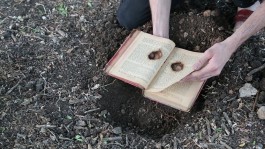
Gnizah
Ich fand das Buch Dewarim (Deuteronomium) in den Straßen von Jerusalem. Es war ein Loch in seine Brust eingebrannt. Ich wunderte mich über die Geschichte dahinter. Der jüdischen Tradition Gnizah gemäß, habe ich das Buch auf einem Friedhof in Jerusalem vergraben. Für mich war es ein Akt, der die Heiligkeit des Buches ehrte - ein Versuch, die Wunde zu versöhnen und zu heilen. Aber es war auch ein Abschied von einer religiösen Tradition und eine Übergabe an das Prozesshafte des Lebens und der Natur. Wie einen Samen in die Erde zu säen, übergebe ich die Form in mögliche Veränderung und Wachstum.
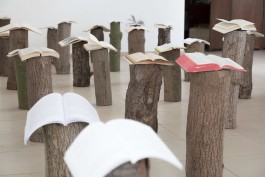
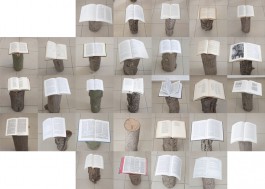
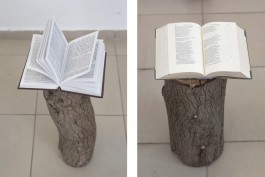
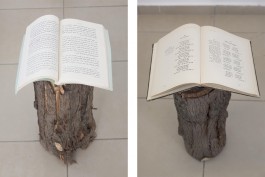
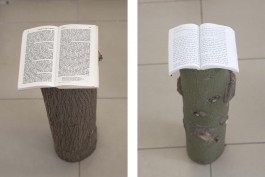
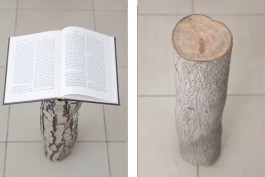
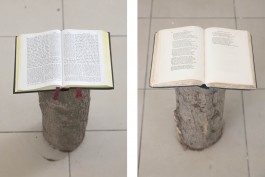
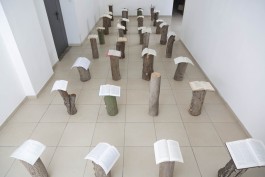
Jerusalems
32 Baumstämme, auf denen Bücher liegen. Die Bücher handeln von Jerusalem und repräsentieren die vielfältigen und widersprüchlichen Interpretationen der heiligen Stadt. Sie reichen von primären religiösen Texten der drei monotheistischen Religionen, Berichten von Pilgern nach Jerusalem, Erzählungen von Kreuzfahrern, islamischer Literatur (Fadā'il) über Jerusalem, jüdischer Lyrik und archäologischen Berichten bis hin zu historischen Darstellungen.
Die lineare Anordnung der Baumstämme ähnelt einem Soldatenfriedhof und betont somit die eher exklusiven Aspekte der Interpretationen von Jerusalem und die damit verbundenen Ansprüche und Konflikte.
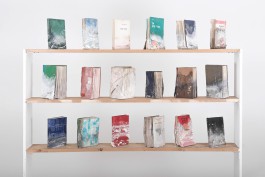
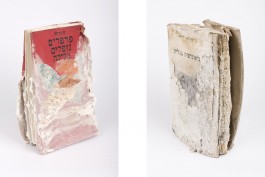
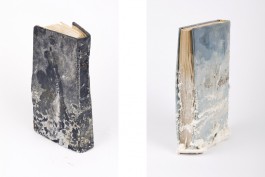
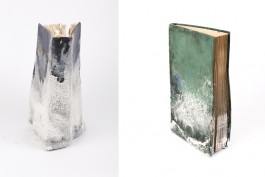
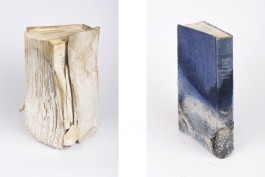
Pillars of Salt
Ein Bücherregal mit 18 versalzten Büchern.
Die versalzten Bücher stellen den Wert und die Funktion des Buches in Frage, indem sie die ambivalente Metapher und das Wesen des Salzes, wie es in der jüdischen und christlichen Tradition verwendet wird, miteinander verbinden. Wie die konservierende Wirkung des Salzes versucht ein (historisches) Buch, Geschichte zu bewahren. Die Konservierung funktioniert durch das Entziehen von Wasser, wodurch die Stoffwechselprozesse des Lebens gestoppt werden, und so eine statische Form aufrechterhalten. In dieser Hinsicht nimmt die Arbeit Bezug auf die Geschichte von Lots Frau, die sich in eine Salzsäule verwandelte, indem sie sich ihrer verschwindenden Vergangenheit zuwandte. Im Gegensatz dazu kann ein Buch die Perspektive erweitern und öffnen. In dieser inspirierenden Funktion liegt der Segen eines Buches, der sich mit dem symbolischen Aspekt des Salzes als Segen verbinden lässt.
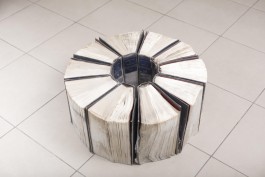
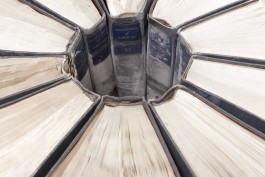
Borges, Jorge Luis. "The Library of Babel"
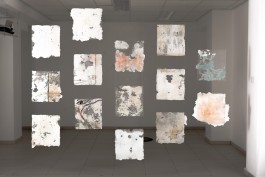
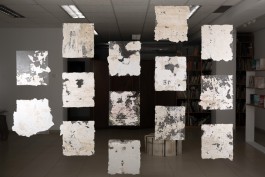
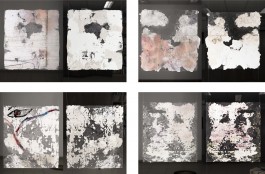
Archeology Of A Facade
14 hängende Plexiglasscheiben mit Wandabzügen.
Sie wurden außerhalb der Galerie an die Fassade geklebt und wieder abgenommen, so dass Teile der Wände abgelöst wurden und die darunter liegenden Schichten zum Vorschein kamen. Im Inneren der Galerie wurde durch die Hängung eine imaginäre Wand mit einem Außen- und einem Innenraum geschaffen.
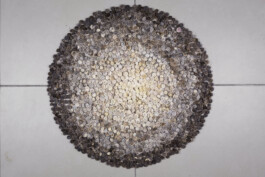
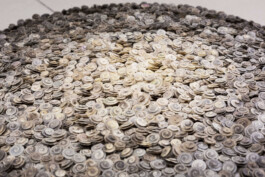
יהי אור (Es werde Licht)
Arrangement von Medicago orbicularis Samen
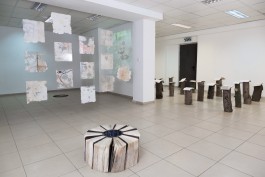
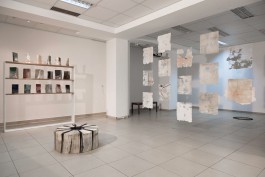
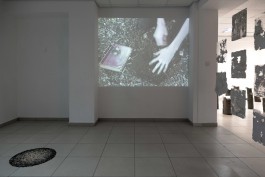
Installationsansicht
The End Of A Golden String
Künstlerresidenz, Mai 2016, Koresh 14 Gallery Jerusalem
Einzelausstellung im Juni
Eine Gesamtinstallation, die an Ort und Stelle im Rahmen des Künstleraufenthaltsprogramms der Galerie Koresh 14 in Jerusalem entwickelt wurde.
Die Installation ist in 3 Räume unterteilt.